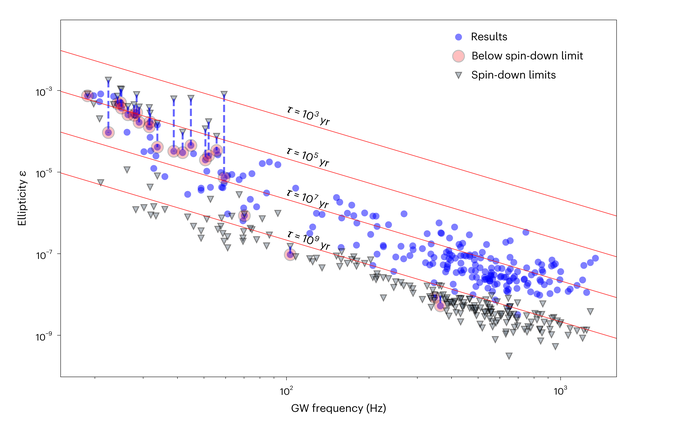
Direct detections of gravitational waves have become a powerful new tool of multi-messenger astrophysics. Apart from short-duration (transient) events, like the inspirals and mergers of stellar-mass compact objects, we envisage other signal types of much longer duration - continuous gravitational waves. Traditionally associated with neutron star astrophysics, and hence with their largely-unknown dense-matter interiors, continuous gravitational waves are now also entering other fields of astrophysics, namely searches for dark matter, primordial black-holes or exotic particles. Their long duration allows for qualitatively new possibilities, such as reproducible studies and tests of gravitational theory.
The review, Astrophysics with continuous gravitational waves, written by Brynmor Haskell (Copernicus Astronomical Center in Warsaw) and Michał Bejger (Copernicus Astronomical Center and INFN Ferrara) and published in Nature Astronomy, summarizes the results obtained in the recent O3 observing run of the LIGO-Virgo-KAGRA collaboration, the current status of the data analysis and the theoretical ideas related to astrophysical models. They show that O3 observations have started probing astrophysically relevant scenarios, and discuss how the improved sensitivity of the currently-ongoing O4 observing run may offer a real possibility for a first detection of continuous gravitational waves.
Fig.:Ellipticity (deviation from axisymmetry) as a function of the gravitational-wave frequency for a selection of observed pulsars (fig. 1 in the publication). Click here for better resolution.
Text: Michał Bejger






